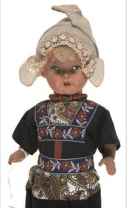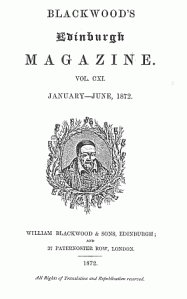
Hardy’s last published novel is The Well-Beloved. Published in 1897, it is the revised version of The Pursuit of the Well-Beloved, which was serialized in 1892.
The writing shows Hardy’s usual skill with description and getting into his character’s heads, and also his usual reluctance to give his characters much self-awareness or to allow them to significantly grow (which is my frustration with his fiction in general). The novel has less natural description that earlier works like The Woodlanders or Tess and so seems to move at a faster pace.
The plot is the quest of Jocelyn Pierston to locate and hold onto an ideal he calls “the well-beloved.” She is a transcendental spirit not limited to one woman’s body, and the closer Pierston comes, the further she seems to recede. His belief causes him to throw away his best chance for happiness, to marry Avice, a childhood friend. They are betrothed but she refuses to meet him one night, so he abandons her in favor of another woman who appears–and who shortly thereafter abandons him. This is the story of Jocelyn the young man.
The book’s second section is called “The Young Man of 40.” Jocelyn is little change though all others have aged–something I could identify with! He received notice that Avice has died, goes to the island where she lived, and meets her daughter, Ann Avice. Jocelyn insists on calling this incarnation “Avice” after her mother, and she is an avatar of the well-beloved more than her mother was (part of Jocelyn’s hesitation to marry). In his pursuit, he gets her to become his servant (his fortunes having risen and those of her family fallen), then courts her until he discovers she is already married. He then reunites her with her husband (who is also a Pierston, though not a direct relation) and helps him in a career.
In the third section, “A Young Man of 60,” Jocelyn received a letter from Ann Avice asking him to come. When he visits her, he sees Avice the third, also very like the first Avice. This Avice has been educated and works as a governess. Her mother, the matchmaker, wants Jocelyn to marry her so she will be cared for. He falls in love at first sight, as expected, and Avice agrees to marry him despite his age, because her mother wishes it. In a karmic turn of events, Avice jilts him just as he jilted her grandmother. Jocelyn sends an allowance to her and her husband.
Another aspect of the karma involves Marcia, the woman he ran away with. Her family called her back home and he never saw her again after their elopement–until she comes to the house of Ann Avice. She is the step-mother of the man Avice the third has married. Jocelyn sees in all this a punishment, and after his illness he loses his ability to appreciate beauty. Beauty had been his livelihood–he was known after his death as a sculptor of genius. He marries Marcia and they are good friends until his death.
This is one of Hardy’s most moral tales. The only trace of immorality is the “island custom” in which a betrothed couple would have sex to seal the covenant. Ann Avice had practiced the custom with her husband and so married him, despite her lack of interest after the event. The night Avice the first stood up Jocelyn, they were supposed to meet in a solitary place where she was afraid he would want to act according to custom. From one point of view, he abandons her because she won’t have sex, which shows a lack of character but not especially a lack of morals.
Hardy considered the book totally inoffensive and was thus unprepared when it was maliciously assailed by the critics as immoral. He wrote to Lady Jeune, “After such a cruel misrepresentation I feel inclined to say I will never write another line” (29 March 1897). He worked on a short story after this date and some prose, but for the most part, his attention shifted to poetry.
(Bannerhead image by Walter Piaget from The Illustrated London News)




 literature. A typical prostitute approach was “Are you good-natured, sir?”
literature. A typical prostitute approach was “Are you good-natured, sir?”






